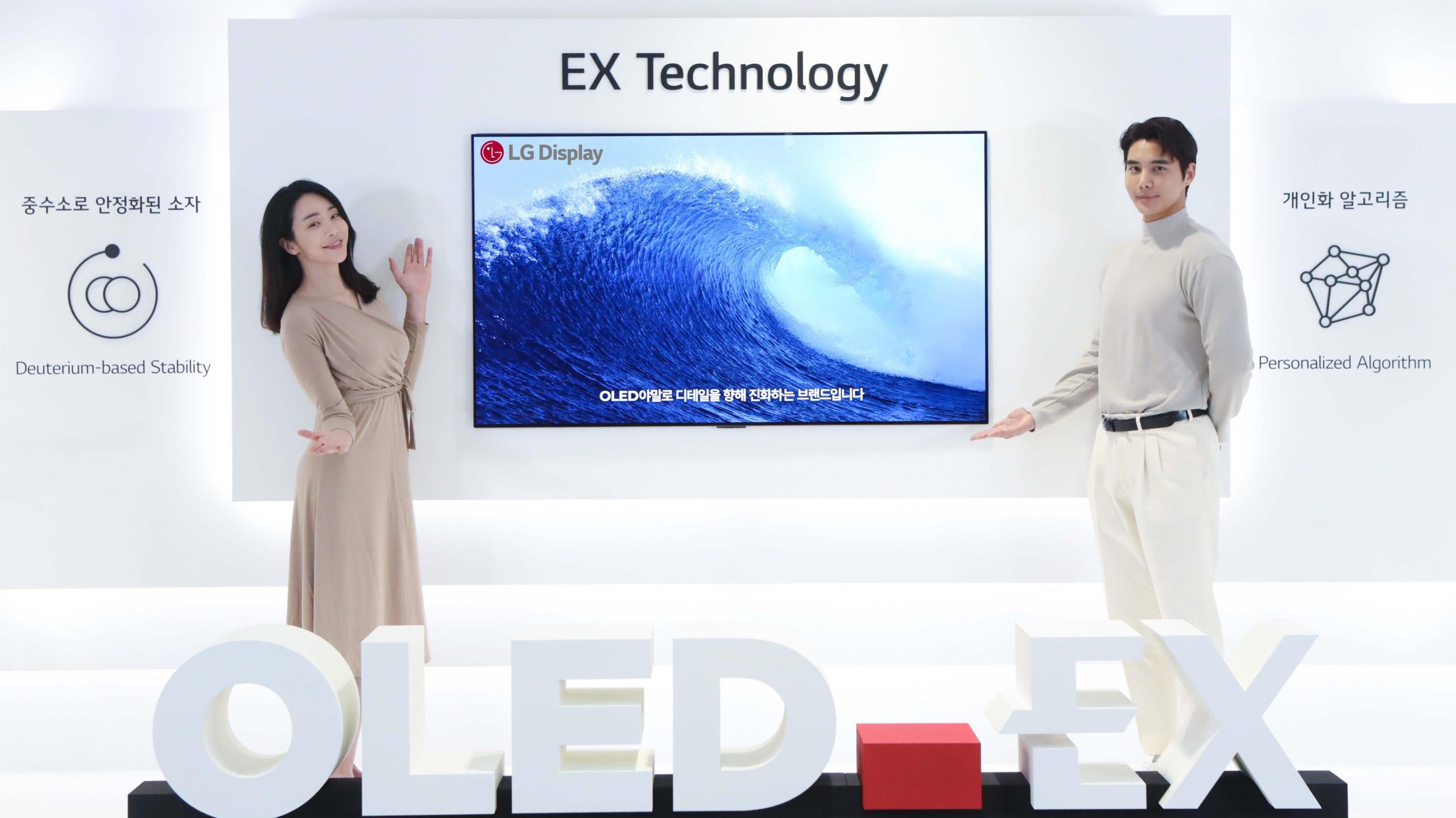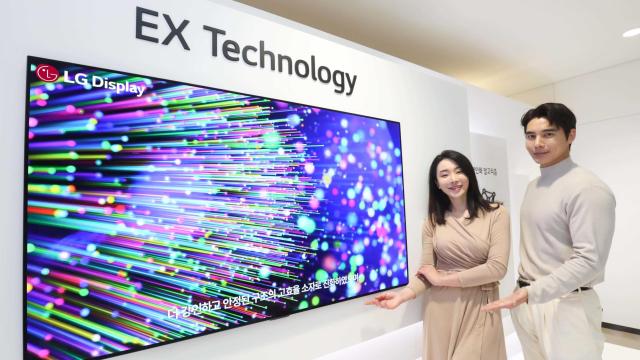LG is having a busy CES 2022 and the show hasn’t even started. The company already revealed two bizarre OLED concepts and a pair of odd TVs, but today it made its most significant announcement yet by debuting OLED EX, the next generation of its OLED display technology.
OLED EX (the EX stands for Evolution and eXperience, unfortunately) promises to boost maximum brightness, enhance picture quality, and allow for smaller display bezels. The underlying technology — millions of individual self-lit pixels — hasn’t changed, but the use of an isotope called deuterium combined with algorithmic image processing can increase brightness by up to 30% over conventional OLED displays, LG claims.
As boring as that may sound, the science behind it is actually pretty fascinating. LG found a way to extract deuterium, a rather scarce isotope (there is one deuterium atom in 6,000 hydrogen atoms) that’s twice as heavy as hydrogen from water, then applied it to its TV’s OLED elements. LG says stabilised deuterium compounds let the display emit brighter light while improving efficiency over time.
Moving to the second change, LG is using a “personalised” machine learning algorithm that predicts the usage of each light-emitting diode (on up to 8K TVs) based on your viewing habits, then “precisely controls the display’s energy input to more accurately express the details and colours of the video content being played.”

Image quality isn’t the only enhancement coming to OLED EX TVs; LG says the new screen tech lets it reduce display bezel thickness from six millimetres to four on 65-inch TVs. That may not seem like much of an improvement, but when you’re on this scale, even the smallest reduction makes a difference.
Perhaps the best thing about LG’s announcement is that OLED EX isn’t a concept nor will it be only found in prototypes — the new display tech will be used in every OLED TV manufactured at Samsung’s Paju, South Korea and Guangzhou, China locations starting in the second quarter of next year. LG didn’t say when it would release the first OLED EX products but from the sounds of it, it could be as soon as mid-2022. We’ve reached out for specifics.
“Despite the global TV market experiencing a 12% decline this year, we still observed a 70% growth in OLED sales,” said Dr. Oh Chang-ho, the executive vice president and head of the TV Business Unit at LG Display. “With our new OLED EX technology, we aim to provide even more innovative, high-end customer experiences through the evolution of our OLED technology, algorithms, and designs.”
I haven’t seen this latest version of OLED in person yet, and since we won’t be attending CES (LG still seems onboard, FWIW), it might be a while before I do, but the promise of a TV that addresses one of OLED’s few shortcomings — brightness — already has me running to the store to buy popcorn.
But first, I might want to see what Samsung has to show at CES. The company already revealed the tactics it’ll use to bridge the gap between its QLED panels and LG’s superior OLED displays with something called QD-OLED. By combining elements of Quantum Dot with OLED, Samsung reckons it can give us the best of both worlds: perfect blacks and incredible contrast as well as high brightness levels (sound familiar?). Sony, a longtime customer of LG’s OLED panels, will reportedly release its own QD-OLED TVs.
This is all good news for consumers; the TV war is once again heating up, and the outcome, regardless of who wins, should be a wider selection of products with better picture quality than what is on the market today.
